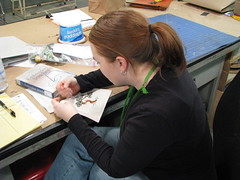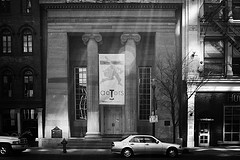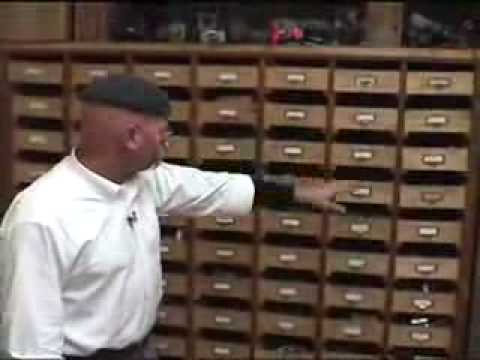This article first appeared in The Critic, a London literary journal, in 1851.
A Peep into the Interior of an Opera House
The Property Department
The word “property” implies that vast variety of articles which, after the scene is placed and the actors are dressed, are still required to complete the picture. It is easier to name some of these things than further to define their general character. Among them are stage furniture – tables, chairs, sofas, ottomans, curtains, draperies, musical instruments (other than those used by the orchestral performers), flowers, vases, garlands, helments, swords, spears and shields, thrones and canopies, animals, jewel caskets, crowns, coronets, and sceptres, guns, halberds, wings and wands for fairies, altars, cabinets, goblets, banquetting boards, tombs, sledges, carriages, garden seats, chandeliers, banners, trophies, croziers, flags, mitres, candlesticks, beds, clocks, looking-glasses, lanterns, emblems, masks, palm branches for angels, and torches for devils. With such a specimen of the varieties, each of which is “a property,” some idea may be formed of the ingenuity, readiness, and industry which send up all these things when wanted, and a thousand others, from the bowels of the theatre itself. For nearly everything is manufactured on the spot. Descending through some labyrinthine passages, and below the level of the put, the explorer finds a series of apartments where day does not seem to come, but where eternal gas more than supplies its place, and where – under the superintendence of the most talented of property masters, Mr. Bradwell – a body of workers male and female, are engaged in making and ornamenting these articles, renovating old ones, and transforming them from one fashion to another, or skillfully carving, and gilding, and painting new and fresh ones. The scene, as may be imagined, is extraordinary, from the miscellaneous character of the manufacture. For while some of the objects are substantial and real, others are but imitations. A chair or a sofa, for example, is solid and steady – which is well, for Signor Lablache may chance to sit upon it – whereas the spear of the angel, or the pickaxe of the peasant, which is to be wielded by some young lady in the wings or a jacket, as the case may be, is of some light wood, with silver paper counterfeiting steel, or a little dark paint affecting to look like iron. There is, of course, a separation in the labour, but to the unaccustomed eye there is a series of visions of gold, shavings, bright colour, carpenters’ benches, diamond stars, tenpenny nails, goblets of rosy wine, and unmistakeable gluepots. But it requires a more intimate inspection of the work, and a comprehension of its heterogeneous character, to do justice to the extraordinary ability of the property master. When a new opera or ballet is to be produced, he makes out, very early in its history, a list of everything which can possibly be wanted upon the stage, and he is responsible for the scenes lacking nothing when the curtain rises.
Originally printed in The Critic, London Literary Journal. Volume 10, Published by J. Crockford, 1851 (pg. 183)



